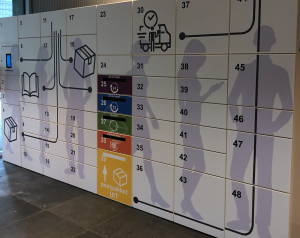A new paper aims at evaluating the environmental and economic impacts of a crowdshipping platform in cities. The study refers to the city of Rome and considers crowdshipping based on the use of the mass transit network of the city, where crowdshippers pick-up/drop-off goods in automated parcel lockers located either inside the transit stations or in their surroundings.
Crowd shipping
Crowdshipping is a possible solution that foresees the integration of passenger and freight mobility. In line with the sharing economy, it implies delivering goods using the crowd making use of modern information communication technologies. Crowdshippers are passengers that would use the transit network anyhow for other activities (e.g., commuting), thus avoiding additional trips.
The study firstly estimated the willingness to use a crowdshipping service like the one proposed here, in order to quantify the potential demand. The willingness is evaluated by performing an extensive stated preference survey and discrete choice modeling. The possibility to plan the delivery date and its time schedule is the most relevant feature while having a lower shipping time with respect to the current situation has the lowest impact on utility. This reflects the fact that the actual delivery system is, in general, efficient in terms of shipping time (e.g., same-day delivery) while time windows are usually large, and people have to wait at home for their goods, producing either dissatisfaction or missing deliveries.
Economic sustainability
Several scenarios with different features of the service are proposed and evaluated up to 2025 in terms of both externalities (local and global pollutant emissions, noise emissions and accidents reductions) and revenues.
The economic sustainability is reached only with public incentives justified by the reduction of externalities to the society that such a system can produce. The biggest challenge policy-makers have to face is the redistribution of costs and benefits among stakeholders. In particular, policy-makers should provide the subsidies needed to cover platform costs due to the collective benefits it would
The results are useful to understand and quantify the potential of this strategy for last mile B2C deliveries. Moreover, it provides local policy-makers and freight companies with a good knowledge base for the future development of a platform for public transport-based crowdshipping and for estimating the likely impact the system could have both from an economic and environmental point of view.

